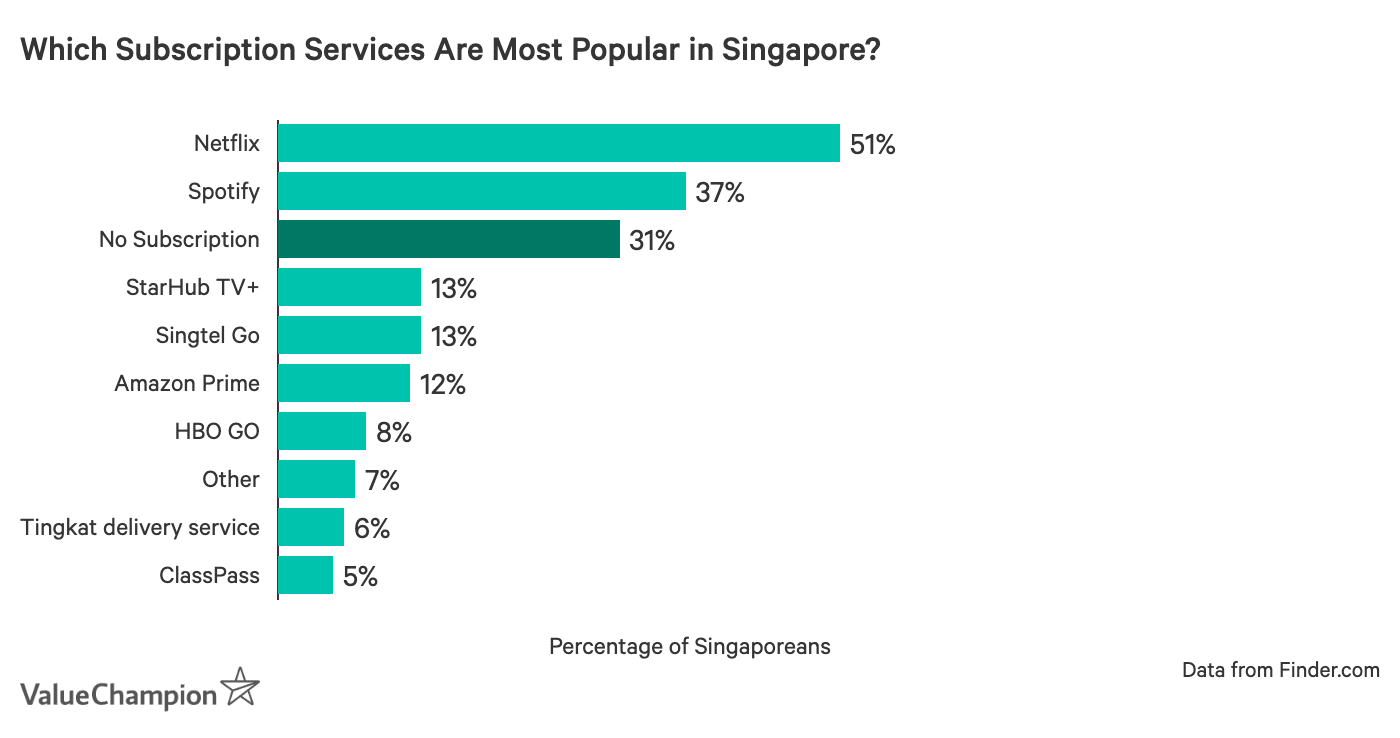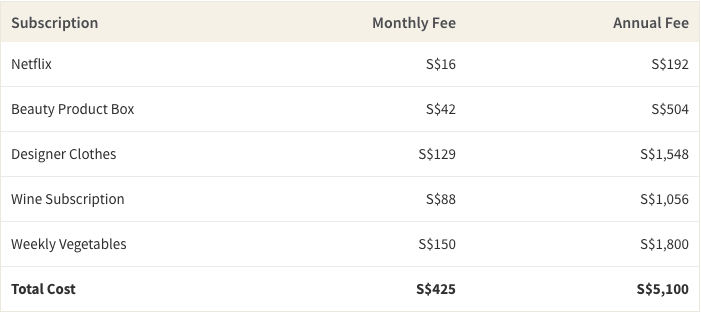Are Subscription Services Slowly Making You Poor?
Whether it’s your favourite show, fresh vegetables, music, or flower bouquets, there’s probably a subscription service for it in Singapore. A recent survey found that 69% of Singaporeans over the age of 16 have a subscription service, an estimated 2 million people. 39% have more than 1 subscription, and 19% have more than 3.

While subscription services can be a huge convenience, they can quickly get out of hand. Sometimes these services border on the absurd: you can subscribe to a service that goes through your expenses and cancels your existing subscriptions. ValueChampion ran the numbers to show how subscription services add up and the opportunity cost of spending too much on renewing purchases.
The Costs (and Opportunity Costs) Of Subscriptions
An individual subscription seems affordable when you think about it on its own. For example, an S$9.90 Spotify subscription for limitless music access seems like a great deal. However, when one service becomes 5, the costs quickly escalate. This escalation is especially true if you don’t closely monitor your budget and fall victim to marketing tactics like a reduced initial subscription that increases in price after 3-6 months of use.
The following table calculates the total of several subscription services in Singapore.

Notice that you could replace several of these services with a single trip to the grocery store every week. While a weekly box of vegetables of a new delivery of designer clothing might provide a burst of happiness, you will end up with significantly less money and more clutter than you need over time.
The costs of subscriptions are especially glaring when you consider another factor: the opportunity cost. Opportunity cost is the potential cost to an individual when one alternative is chosen over another. According to Finder.com, the average Singaporean spends S$57.69 on subscriptions every month. Let’s see what happens if you cut that expense in half and invested the extra S$25 per month in a brokerage account for a conservative rate of return of 5% per year.

As you can see, just an additional S$25 invested from canceling unnecessary subscriptions can snowball into significant earnings over time.
Are Subscriptions Really Worth It?
Products provided by subscription services can often be obtained for far less with online vendors or at the grocery store. Furthermore, the materials used to package and ship small portions of products to your doorstep every week or month have a significant environmental costs. There are cheaper and less impactful ways to enjoy fine foods and services than overpriced subscriptions.
One trendy subscription service today is Winemasons, an Australian subscription wine service. Their beginner plan charges S$145 for 3 bottles of wine per month (not including shipping or taxes). While customers receive a variety of wines they likely wouldn’t know about otherwise, the reality is you are paying more than you would by buying at other locations or in bulk — and you might not even like what they send you.
You could instead do your own research and buy 3 bottles of wine on Lazada. We selected 3 bottles of varying quality for S$24.90, S$28,90, and S$68.30, totaling S$122.10, or S$22.90 cheaper than the subscription service. Even better, once you find a bottle you like, you can buy in bulk for even better savings. A bundle deal of 6 bottles of popular Australian wine costs S$149.00, which ends up costing half as much as two months of a subscription service.
This is just one example of a subscription service that has a significant markup for a product that is readily available for less. From meal delivery services to makeup boxes and designer clothes, many consumers can end up with more money to save or invest by doing a little extra work when shopping.
Breaking the Cycle
The first step to cutting superfluous subscriptions is to audit your expenses and determine just how much you are paying every month. While some expenses are obvious like a recurring Netflix bill, you might be forgetting about that S$1.28 iCloud storage fee or the gym membership you pay 12 months at a time at the beginning of the year. Expenses to count include:
- Video streaming services (Netflix, Hulu, etc)
- Music streaming services(Spotify, Apple Music, etc.)
- Security subscriptions (for home and anti-virus for your computer)
- Online storage
- Photo storage and sharing
- Online backups (Mozy, Carbonite, iDrive, etc.)
- Personal styling
- Magazine, book and news subscriptions (Audible, New York Times, etc.)
- Gyms
Once you know the true extent of your subscriptions, try to eliminate anything you only use once or twice a month. The easy cuts will be the gym membership you forgot you had or the Netflix subscription that you only signed up for to watch one new show. Next, try and eliminate services that you can replicate by making an extra stop during your grocery run. Cutting subscriptions may seem like a small change, but an extra S$100 invested or added to a savings account will make you substantially wealthier in the long run.
